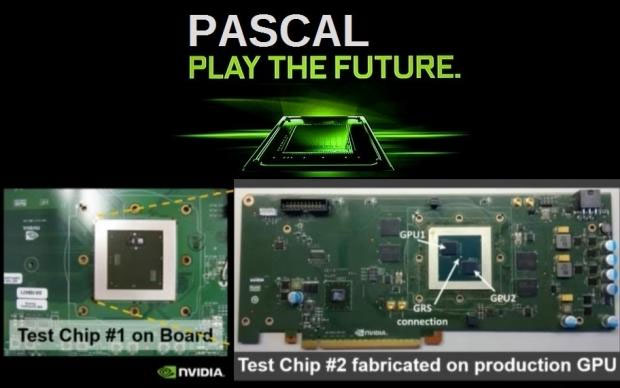But the interposer isn't much easier to create and adds costs too.
AMD and Nvidia are already moving to using interposers with things like HBM anyway. So,smaller GPUs on the interposer as opposed to one large one is not going to change much.
However,it will massively improve yields and cut GPU R and D as you can scale up one basic GPU "unit".
People do you realise that JHH said the GP100 cost $2 to $3 billlion to develop and they hoped to make some money on it(or something to that extent)??
People also trying to dismiss what the chap is saying are also forgetting the massively increased costs of each node,and the fact software is changing the way multi-GPU is handled.
Even if people were to state it would mean more software would be in place for all of this to happen and devs won't bother - that is making assumptions too.
Why??
Costs. Being able to drop hardware costs longterm,will be a major impetus for Sony,MS and Nintendo to push forward- that is where most of the risk for them comes from. Plus the other aspect which is a massive impetus for Sony,MS and Nintendo is also the fact they can update the consoles more easily.
Making the consoles X86 was also about cost - people were poo-pooing that notion when the first leaks about the consoles being X86 were released.
Also,until Nvidia gets a decent CPU in-house it is far cheaper to deal with one company - so realistically only Intel is the other company in the fray,unless they both form an alliance of sorts.
Remember we are talking a few years from now.
Have people not even seen how more and more of the Gameworks titles are doing OK on AMD cards?? That indicates we are starting to see an effect of AMD being in the consoles.
Look at something like The Division - a total reversal of what we saw with Watch Dogs from two years ago. This is from Ubisoft who are very close to Nvidia.
Remember - most of the titles in the first few years of the consoles were developed with the older consoles in mind too. Titles like Watch Dogs being examples of this. These will have been years in development.
As time progresses more and more titles will be developed solely with the new consoles in mind,and many of those are now starting to be released.
The problem is too many enthusiasts expect these things to happen in a short period.
PS:
I also expect Nvidia to start putting multiple GPUs on an interposer too.
Far cheaper to develop one smaller GPU and scale it up.
Do people also think MS would include all this effort with new ways of doing multiple GPU in DX12 without consulting AMD or Nvidia. Very doubtful indeed IMHO.
AMD will get their first IMHO though,but it probably be at least 2018 or 2019 til we start to see this. I expect Navi to be more end 2018 if anything else.
This will take a few years to come to fruition but it is going to happen IMHO.
Process tech is getting more and more difficult to implement - even moving to 450MM wafers,look at how many years it has been delayed to the enormous costs?? Even Intel is finding it hard to afford!!
Hence,companies are going to have to think in more creative ways to make sure costs don't spiral out of control.




